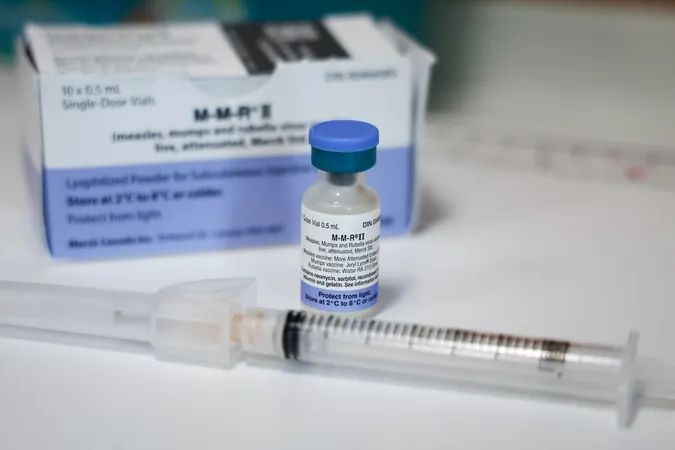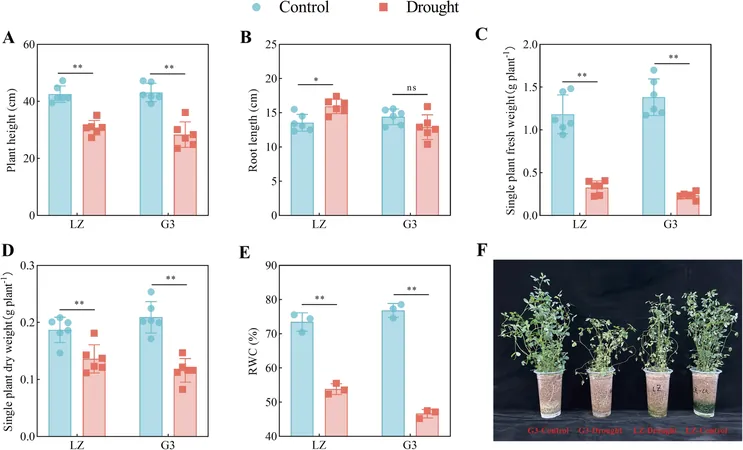
The Measles Vaccine: A Triumph in Science Facing Unprecedented Apathy
2025-09-21
Author: Jacques
On February 8, 1954, young David Edmonston experienced something that would change medical history—an upset stomach. At the time, this seemed trivial compared to global events like the death of Joseph Stalin and the introduction of color television.
However, for Dr. Thomas Peebles, who was working at Boston Children’s Hospital, this was the moment he had been waiting for. Recognizing symptoms of a measles outbreak at David's school, he rushed to collect samples from the boy, who agreed to help in the fight against a disease that was becoming increasingly notorious.
Fast forward to today, every Canadian child receiving a measles vaccine is inoculated with a strain that originated from David Edmonston's blood—an extraordinary achievement stemming from a simple child's illness. This breakthrough led to the creation of the measles vaccine, saving nearly 94 million lives over the past 50 years.
Why Does Measles Still Pose a Threat?
Despite overwhelming potential for eradication, measles has not been wiped out. In 2023 alone, more than 100,000 people, mostly children in low-income countries, lost their lives to this preventable disease. Alarming resurgences have occurred in previously measles-free countries like Canada and the U.S., where public health officials are grappling with outbreaks not seen in decades.
From the onset of this vaccination journey, public reception has been mixed. Pediatrician Adam Ratner notes that while the polio vaccine was met with widespread applause, the introduction of the measles vaccine in 1963 was marred by inconsistencies and public misunderstandings about its importance. Many mistakenly viewed measles as a harmless rite of passage for children.
Barriers to Acceptance
A significant barrier to vaccination stemmed from the belief that measles was a benign part of childhood. In reality, it claimed more Canadian lives than polio annually. Complications from measles can be severe, including immune system suppression and death for one in every 1,000 infected children.
Initial vaccines offered subpar protection and were also associated with side effects. The introduction of the combined measles, mumps, and rubella (MMR) shot in the 1970s was a welcome change; however, outbreaks continued, revealing the persistent low vaccination rates. An Ontario health report pointed to a disinterest among parents, unfamiliar with the historical terrors of pre-vaccination diseases.
Legislative Efforts and Their Fallout
In the 1980s, in response to continued outbreaks, Canadian provinces like Ontario began passing laws mandating vaccinations for school-age children. However, this engendered a backlash, giving rise to anti-vaccination movements.
The Wakefield Scandal and Its Impact
The publication of a fraudulent paper in 1998 by Andrew Wakefield linking the MMR vaccine to autism crushed progress toward eradication efforts, right when the vaccination rates were finally starting to climb. This incident illuminated the dangers of misinformation, and social media would soon further propel anti-vaccine sentiment, complicating public health efforts.
The New Battle for Public Trust
Today, we face a dire public health crisis. The COVID-19 pandemic has obliterated routine vaccinations and fostered distrust in the healthcare system, allowing measles to rear its head once more. With vaccine skepticism rampant and misinformation spreading uncontrollably across social media platforms, the path forward appears daunting.
Dr. Renée Najera emphasizes that eradication of measles is still attainable, but achieving near 100% vaccination across generations is necessary. The irony remains: while we stand on the brink of a major victory against this ancient adversary, misinformed fear is threatening everything we’ve fought for in the realm of public health.









 Brasil (PT)
Brasil (PT)
 Canada (EN)
Canada (EN)
 Chile (ES)
Chile (ES)
 Česko (CS)
Česko (CS)
 대한민국 (KO)
대한민국 (KO)
 España (ES)
España (ES)
 France (FR)
France (FR)
 Hong Kong (EN)
Hong Kong (EN)
 Italia (IT)
Italia (IT)
 日本 (JA)
日本 (JA)
 Magyarország (HU)
Magyarország (HU)
 Norge (NO)
Norge (NO)
 Polska (PL)
Polska (PL)
 Schweiz (DE)
Schweiz (DE)
 Singapore (EN)
Singapore (EN)
 Sverige (SV)
Sverige (SV)
 Suomi (FI)
Suomi (FI)
 Türkiye (TR)
Türkiye (TR)
 الإمارات العربية المتحدة (AR)
الإمارات العربية المتحدة (AR)